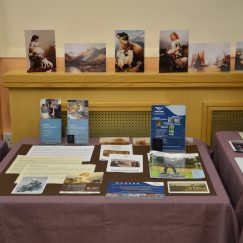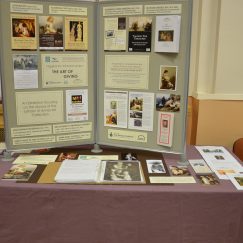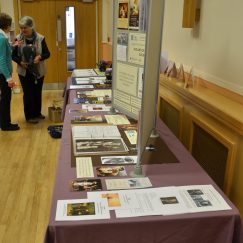
Rene Lalique: Master of Art Nouveau Jewellery and Art Deco Glass
Wednesday 3 June 2015 at 2.00 pm
 Dr Anderson graduated in Art History and Archaeology from Leicester University in 1978 and worked as an archaeologist for 8 years, being elected to the Society of Antiquaries in 1997. From 1993 to 2007 she was senior lecturer on the Fine Arts Valuation degree courses at Southampton Solent University, specialising in the Aesthetic Movement, Arts & Crafts, Art Nouveau and Modernism. She is currently Hon. Research Fellow at Exeter University; a Fletcher Jones Fellow of the Huntington Library, CA; a fellow of the Henry Francis Du Pont Winterthur Museum and Library; Cumming Ceramic Research Foundation Fellow (2007 and 2010) and consultant for Lord Frederic Leighton’s Studio-House, Kensington. Her 2008 exhibition Ancient Landscapes, Pastoral Visions Samuel Palmer to the Ruralists attracted some 47,000 visitors. She has published books on Roman pottery, Art Deco teapots and Edward Burne-Jones. A NADFAS lecturer since 1993, Anne toured Australia in 2000, 2006, 2009 and has lectured on cruises. Her television credits include BBC’s Flog It!
Dr Anderson graduated in Art History and Archaeology from Leicester University in 1978 and worked as an archaeologist for 8 years, being elected to the Society of Antiquaries in 1997. From 1993 to 2007 she was senior lecturer on the Fine Arts Valuation degree courses at Southampton Solent University, specialising in the Aesthetic Movement, Arts & Crafts, Art Nouveau and Modernism. She is currently Hon. Research Fellow at Exeter University; a Fletcher Jones Fellow of the Huntington Library, CA; a fellow of the Henry Francis Du Pont Winterthur Museum and Library; Cumming Ceramic Research Foundation Fellow (2007 and 2010) and consultant for Lord Frederic Leighton’s Studio-House, Kensington. Her 2008 exhibition Ancient Landscapes, Pastoral Visions Samuel Palmer to the Ruralists attracted some 47,000 visitors. She has published books on Roman pottery, Art Deco teapots and Edward Burne-Jones. A NADFAS lecturer since 1993, Anne toured Australia in 2000, 2006, 2009 and has lectured on cruises. Her television credits include BBC’s Flog It!
Although Lalique is best known for his Art Deco glass of the inter-war years, his career began in the early 1890s as the designer of the finest Art Nouveau jewellery. Patronised by Sarah Bernhardt, Lalique created stunning pieces of jewellery from gold, horn, glass and enamel. He preferred opals and aquamarines to flashy diamonds and his jewels were about design and craftsmanship rather than vulgar ostentation. As his fame spread his style was copied and debased until Lalique felt that he had exhausted the potential of jewellery. At that very moment, around 1907, the perfumer Coty asked Lalique to design some labels for his scent bottles but Lalique went one better and designed a new stopper – he had created the first customised perfume bottle. The public loved the idea and a craze began. Soon Lalique was designing for Worth and other famous perfumers. After the war Lalique extended production into decorative vases, tableware, lamps and even architectural glass. All his glass was press moulded but of the highest quality. He survived the Depression with car mascots and paperweights. Lalique died in 1945 but his Company is still going and his glass is regarded as some of the finest ever created.
The lecture notes leaflet can be downloaded here
Below are photos of this lecture
- Lecturer Dr Anne Anderson
- Information boards
- Information boards













